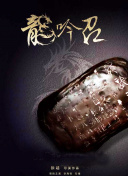


2022 FIFA World Cup is just around the corner, and football fans around the globe are eagerly awaiting the tournament. Apart from the fierce competition, another aspect that captures the attention of the football enthusiasts is the unique design and technology of the ball that will be used during the tournament. In this article, we will explore the materials used in the making of the football for the 2022 World Cup.
The surface of the football plays a crucial role in its performance. For the 2022 World Cup, the ball's surface will be made up of synthetic panels. This material ensures excellent durability, allowing the ball to withstand the intense pressures of the game without losing its shape. Additionally, the synthetic panels offer superior grip, enabling players to have better control over the ball.
The bladder is the innermost part of the football that holds the air and gives the ball its shape. For the 2022 World Cup, the bladder will be made of butyl, a type of synthetic rubber. Butyl is preferred due to its high air retention properties, ensuring that the ball remains inflated for a longer period of time. This allows for a consistent playing experience throughout the matches without the need for frequent adjustments or replacements.
The stitching technique used in the construction of the football also plays a significant role in its overall quality. For the 2022 World Cup ball, the thermal bonding technique will be employed. This technique involves the fusion of the panels using high heat and pressure, eliminating the need for traditional stitching. The thermal bonding not only provides a seamless surface but also enhances the ball's aerodynamic properties, making it more stable in flight.
Lastly, the finishing touch on the football for the 2022 World Cup is the matte coating. This coating adds a sleek and sophisticated look to the ball, enhancing its visibility on the pitch. The matte surface reduces the glare caused by bright stadium lights or sunlight, allowing the players to track the ball more easily. Additionally, the matte coating minimizes friction between the ball and the player's boots, enhancing the accuracy and control during passes and shots.
In conclusion, the football for the 2022 World Cup will feature a combination of advanced materials and innovative technologies. The synthetic panel surface, butyl bladder, thermal bonded stitching, and matte coating all contribute to the ball's durability, performance, and aesthetics. As the tournament kicks off, football enthusiasts can look forward to witnessing the extraordinary skills of the players and the remarkable performance of the specially-crafted ball.
